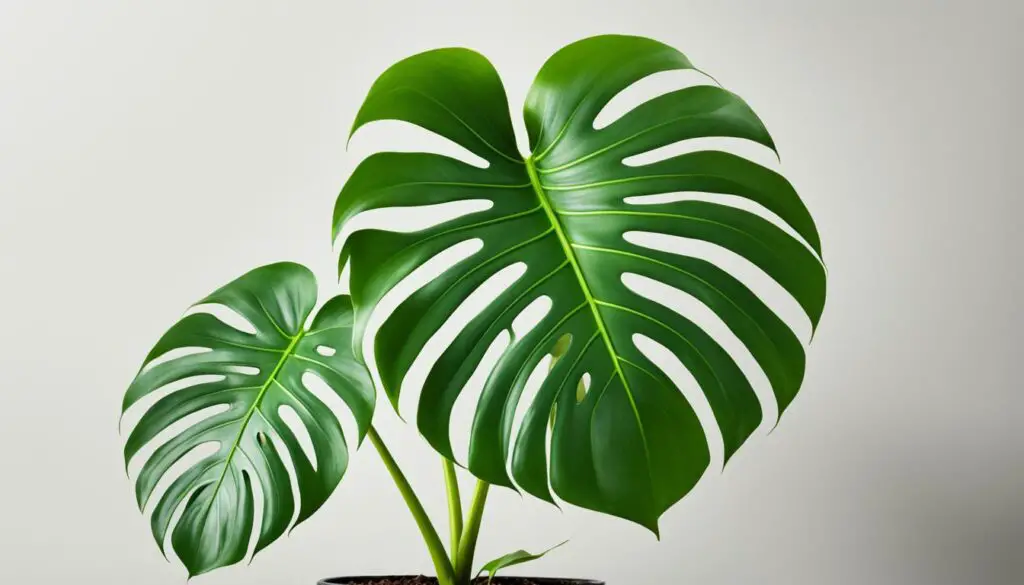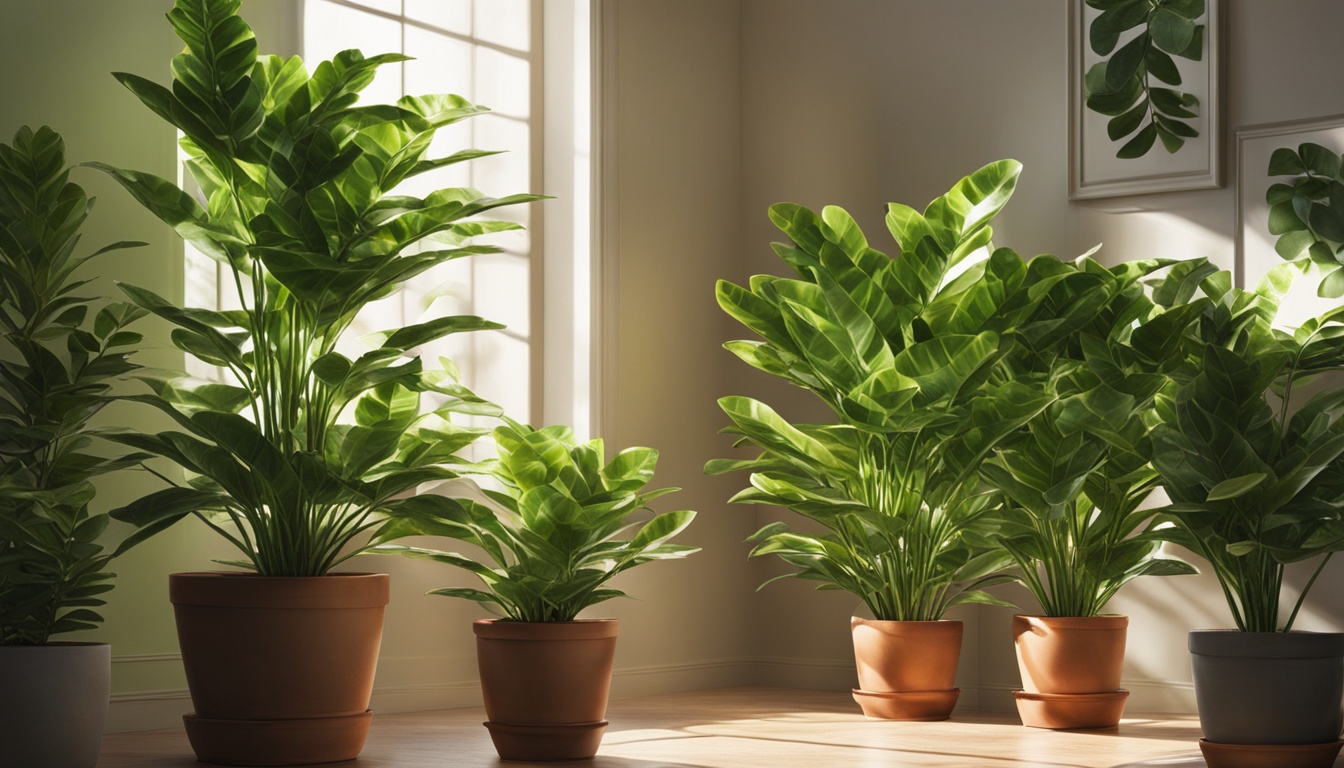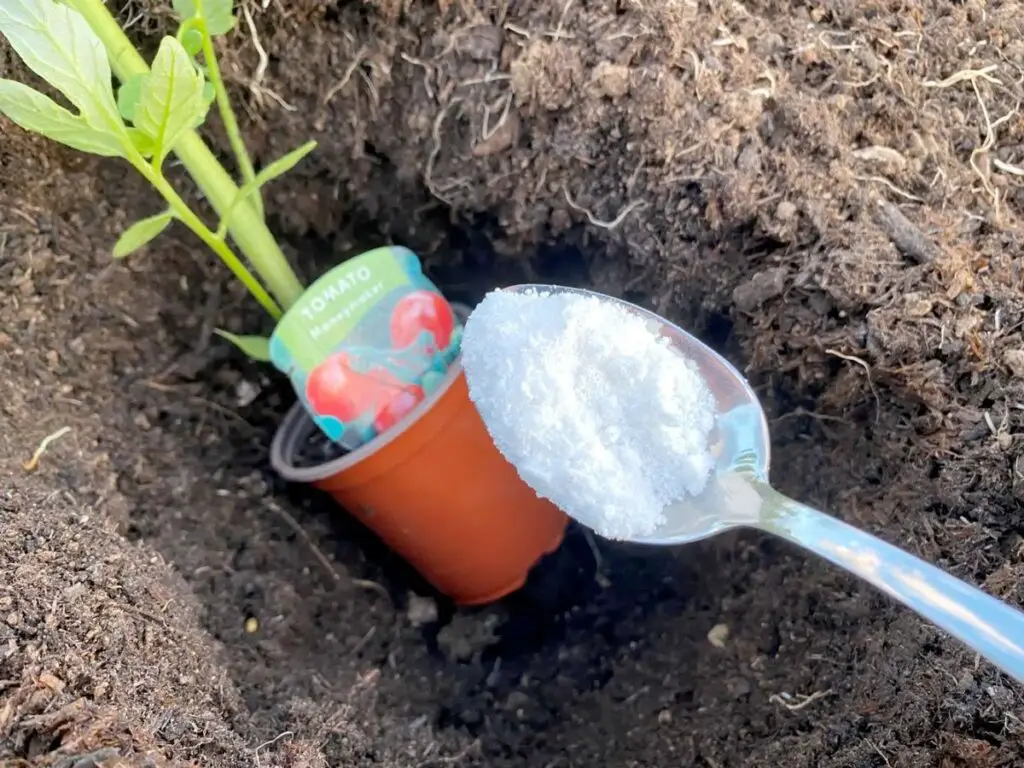I’ve always been drawn to the mysterious Monstera plant. These tropical plants are known for their unique leaves and lush look.
They’re perfect for both homes and offices. If you’re new or experienced in plant care, learning about Monstera can be very rewarding.
In this guide, I’ll share tips to help you grow a beautiful Monstera plant. You’ll learn how to care for it and keep it healthy.

Key Takeaways
- Monsteras thrive in bright, indirect light and require regular watering.
- They prefer humidity levels between 50-70% and temperatures between 65-85°F.
- Proper soil drainage and periodic repotting are essential for Monstera health.
- Monsteras can be propagated through stem cuttings, air layering, or root division.
- Pruning and aerial root management help maintain the Monstera’s shape and growth.
Unveiling the Enigmatic Monstera Deliciosa
Native Habitat and Origins
Monstera deliciosa, known as the “Swiss cheese plant” or “split-leaf philodendron,” is a tropical aroid that has won over plant lovers around the globe. It comes from the lush rainforests of Central America. This climbing evergreen is a true marvel of nature.
It’s found in the tropical parts of Mexico, southern Mexico, Guatemala, and Panama. Here, it loves the warm, humid, and partly shaded spots. Its big, shiny leaves with splits are perfect for letting sunlight through the dense foliage.
Monstera deliciosa can grow up to 20 meters tall in the wild, climbing trees with its aerial roots. It can also live on the ground, making it great for indoor plants and landscaping. Over time, it has spread to places like Hawaii and the Seychelles, becoming a bit of a nuisance.
“Monstera leaves have cultural and symbolic significance in various traditions, representing grandiose plans, glad tidings, and deep relationships.”
Monstera deliciosa is not just pretty; it’s also full of meaning. Its leaves show up in stories and art, symbolizing hidden beauty and inner strength.
In Asian cultures, they stand for respect for people, honoring the elderly, and living a long life.
Exploring Monstera deliciosa reveals a story of botanical wonder and deep cultural meaning. Its origins show how diverse and adaptable nature can be.
Grow A Monstera and Care: Essential Tips
Growing a Monstera deliciosa is a rewarding experience for any gardener. This tropical plant loves bright, indirect sunlight and does best in temperatures between 65-85°F. To keep it healthy, I water it regularly, letting the soil dry out a bit between waterings.
Light and Temperature Requirements
Monsteras can handle some shade but do best in bright, indirect light. Too much direct sunlight can burn the leaves. So, I find the perfect spot in my home for it. I keep the temperature between 50°F and 90°F to prevent growth issues.
It’s important to keep the soil and humidity right for my Monstera. I use a potting mix that drains well and check the soil often. When it’s dry 2-4 inches down, it’s time to water. Mist the leaves or use a humidifier to keep the humidity up.
FAQ
What is a Monstera plant?
Monstera plants are evergreen vines and shrubs from Central America. They are known for their unique leaf-holes, or “fenestrations.” These holes help catch more sunlight. Two popular houseplants, Monstera deliciosa and Monstera adansonii, are often grown indoors.
How do Monstera deliciosa and Monstera adansonii differ?
Monstera deliciosa has long, tapering leaves with open leaf holes. M. adansonii has leaves with closed holes. Both are in the Aroid family and can produce fruit, but they rarely do indoors.
What are the ideal growing conditions for a Monstera deliciosa?
This plant loves bright, indirect light and consistent watering. The soil should dry out a bit between waterings. It also prefers humid conditions and thrives in temperatures between 65-85°F.
How fast does Monstera deliciosa grow?
Monstera deliciosa grows quickly, about 1-2 feet per year. It takes around three years to reach its full size.
What are the essential care tasks for a Monstera deliciosa?
Taking care of this plant means pruning and managing its aerial roots. You should also repot it every two years. Keep an eye out for pests like mealybugs, thrips, and spider mites, and deal with them quickly.



